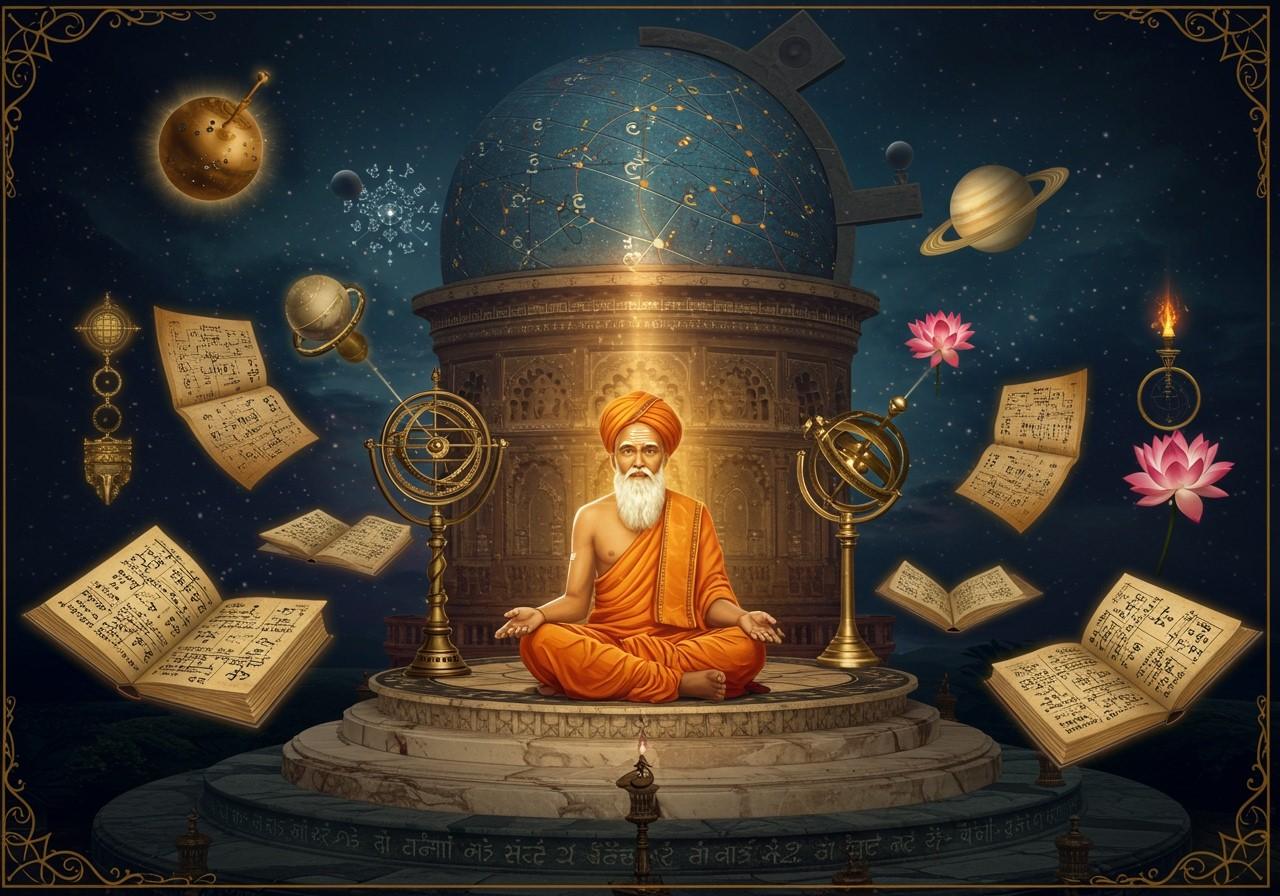
Aryabhata, a renowned Indian mathematician and astronomer born in 476 CE, significantly impacted mathematics and astronomy. His contributions formed the basis for advancements in these fields. This article explores Aryabhata’s education, his key contributions to mathematics, and his lasting legacy.
Aryabhata’s Early Life and Education
Born in 476 CE in Kusumapura (present-day Patna), Aryabhata’s education was shaped by ancient India’s rich scholarly traditions. Nalanda University, a prominent center of learning, likely played a crucial role in his academic development. The prevailing Gurukul system, emphasizing mentorship from a knowledgeable guru, further strengthened his intellectual foundation. This environment fostered Aryabhata’s deep pursuit of knowledge.
Aryabhata’s Major Contributions to Mathematics
Aryabhata’s work in mathematics was revolutionary. His influential treatise, the Aryabhatiya, introduced groundbreaking concepts. Some of his notable achievements include:
- Concept of Zero: Aryabhata introduced the concept of zero and the place-value system, revolutionizing mathematical calculations and laying the groundwork for future advancements in the field. This contribution significantly simplified complex calculations and paved the way for modern arithmetic.
- Algebra: He provided solutions for quadratic equations, a significant advancement in algebra. His methods for solving these equations were innovative for the time and contributed to the development of algebraic theory.
- Trigonometry: Aryabhata developed the sine table and approximated the value of pi (π) to 3.1416, demonstrating his advanced understanding of trigonometry and its applications in astronomy and geometry. These calculations were remarkably accurate for his time and played a crucial role in astronomical calculations.
- Arithmetic: He devised methods for calculating square roots and cube roots, further expanding the field of arithmetic. His innovative approaches simplified complex calculations and made these operations more accessible.
- Geometry: Aryabhata correctly calculated the areas of triangles and circles, establishing fundamental principles in geometry. His accurate calculations demonstrated a deep understanding of geometric principles.
Aryabhata’s Contributions to Astronomy
Aryabhata’s astronomical theories, presented in the Aryabhatiya, were equally influential. Key contributions include:
- Earth’s Rotation: He theorized the rotation of the Earth on its axis, a concept far ahead of his time. This revolutionary idea challenged prevailing beliefs and contributed to a more accurate understanding of celestial mechanics.
- Reflected Sunlight: Aryabhata explained how the moon and planets shine due to reflected sunlight, another groundbreaking concept that corrected earlier misconceptions. This insight demonstrated his keen observation and understanding of the solar system.
- Eclipses: He provided explanations for lunar and solar eclipses based on the shadows cast by celestial bodies. These explanations provided a scientific basis for understanding these astronomical phenomena.
- Planetary Motion: Aryabhata’s work contributed to the understanding of planetary motion and orbits, advancing the field of astronomy significantly. His calculations and observations helped refine models of the solar system.
Legacy and Influence
Aryabhata’s work had a profound and lasting impact. The Aryabhatiya was translated into various languages, disseminating his knowledge across cultures. His work influenced subsequent mathematicians and astronomers, including Brahmagupta and Bhaskara II. His methods and concepts laid the groundwork for future advancements, solidifying his place as a pivotal figure in scientific history. India’s first satellite, named Aryabhata in his honor, reflects his enduring legacy and inspiration for modern scientific endeavors.
How Poojn.in Supports Your Connection to Aryabhata’s Legacy
Poojn.in offers a unique collection of authentic ritual items that connect you to India’s rich mathematical and scholarly heritage. Whether you’re a student, educator, or simply someone seeking to honor this tradition, we provide tools for enhancing your connection to these ancient practices. Explore our selection of items designed to support both traditional rituals and modern academic pursuits:
- Paddy Seeds: Used in ceremonies for knowledge and prosperity, symbolizing growth and abundance in academic pursuits.
- Chand Mala: A decorative garland used in rituals, representing respect for deities associated with knowledge and wisdom.
- Camphor Powder: Used in purification ceremonies and to create a sacred atmosphere conducive to learning and concentration.
- Sacred Thread (Janeu): Traditionally worn during ceremonies and studies, symbolizing a commitment to knowledge and spiritual growth.
Visit poojn.in to explore our complete collection and discover how these items can enrich your connection to India’s scholarly traditions.
Conclusion
Aryabhata’s contributions to mathematics and astronomy were truly groundbreaking. His pioneering work established fundamental principles that continue to shape our understanding of the universe. His legacy remains a source of inspiration for scholars and scientists worldwide, a testament to the power of intellectual curiosity and the pursuit of knowledge.


